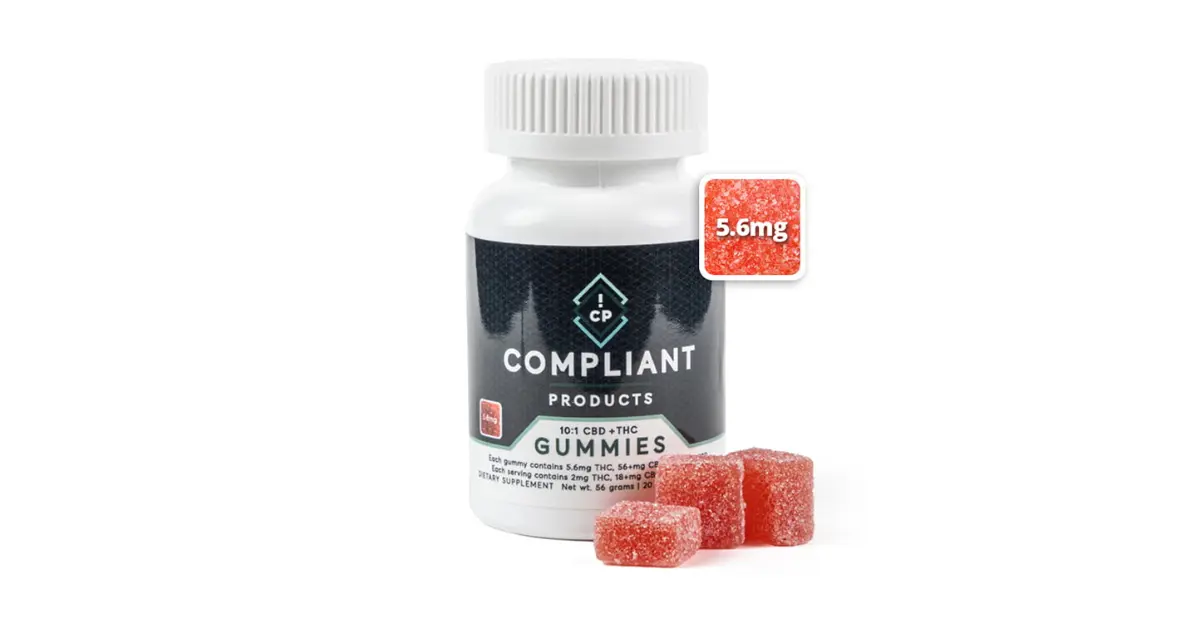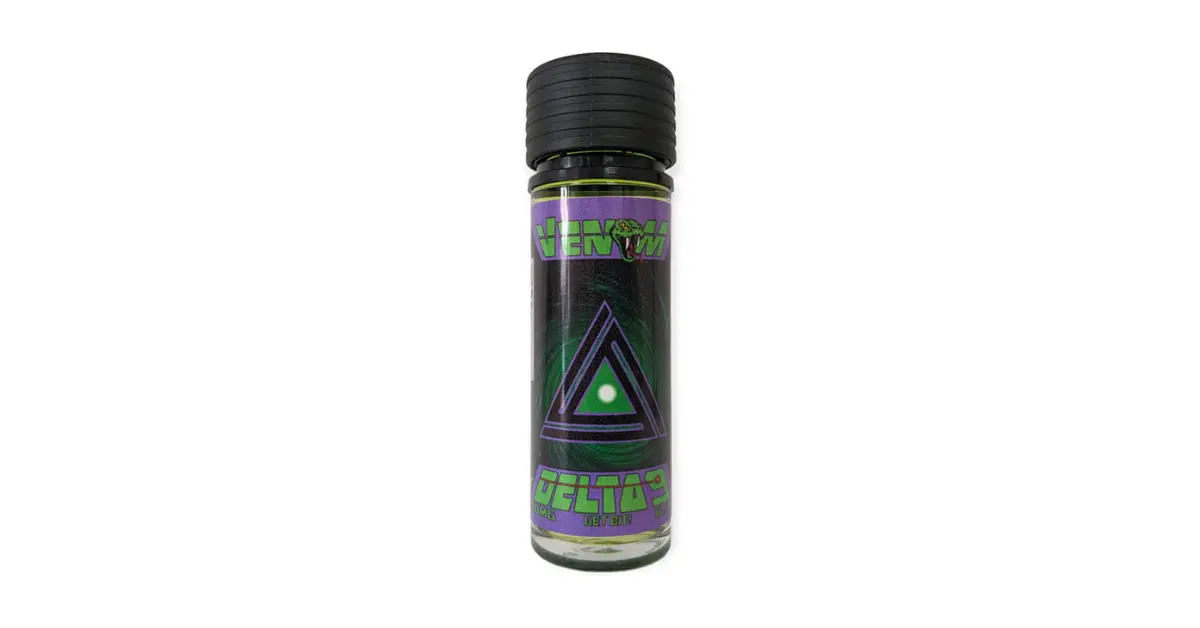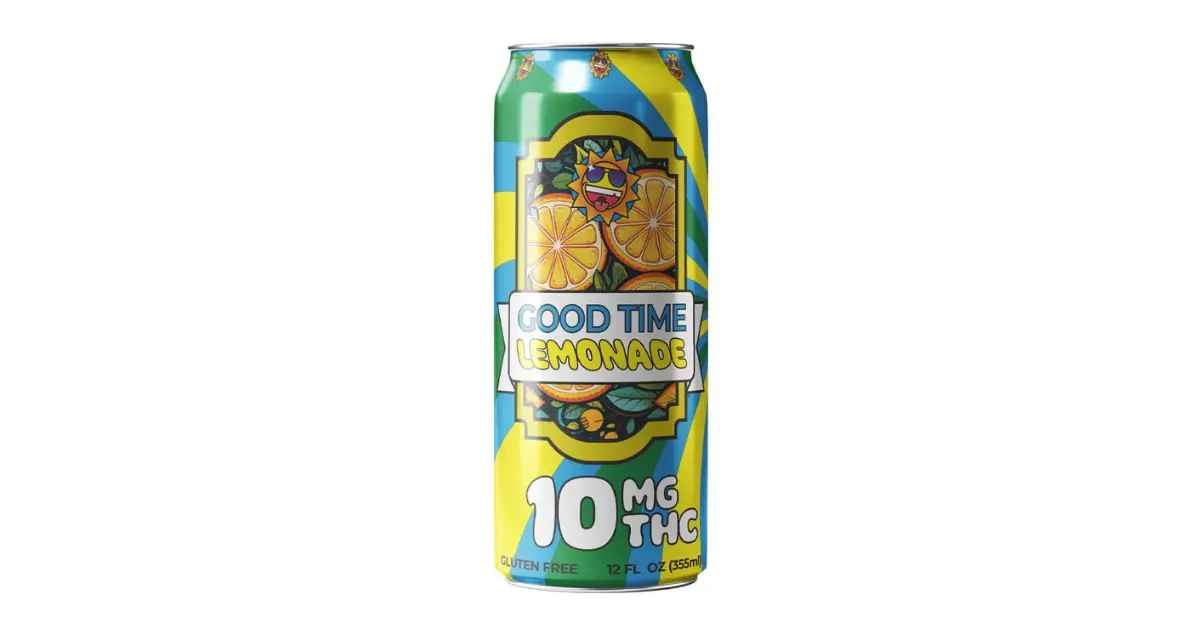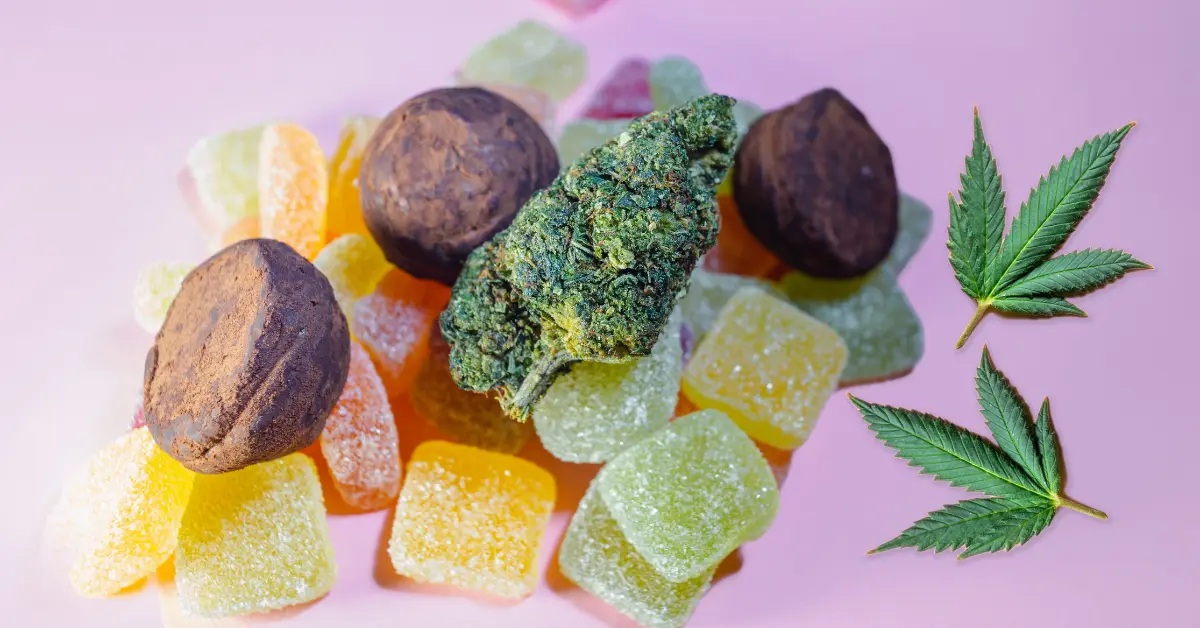When people consume cannabis products, especially those containing delta-9 THC, not all of the compound actually makes it into the bloodstream. This concept is known as delta-9 bioavailability, and it’s important because it determines how much of the active ingredient your body can use. A product with low bioavailability might require a higher dose to feel its effects, while one with high bioavailability can be more efficient and consistent. Understanding bioavailability leads to a better experience and more reliable results with each use.
Challenges in Cannabinoid Bioavailability
Achieving effective bioavailability for cannabinoids, particularly delta-9 THC, remains a fundamental challenge in both medical and recreational cannabis use. Bioavailability refers to the proportion of a compound that enters the bloodstream and becomes available for the body to use. For cannabinoids, this proportion is notably low, especially when consumed orally. One of the primary barriers stems from the chemical nature of cannabinoids themselves. Delta-9 THC and related compounds are highly lipophilic, meaning they dissolve readily in fats but not in water. Since the human gastrointestinal tract is designed to absorb water-soluble substances efficiently, lipophilic compounds like THC struggle to cross the intestinal lining. As a result, much of the ingested cannabinoid content is lost during digestion, leading to poor and inconsistent absorption.
Traditional Delta-9 Absorption Pathways and Limitations
How Delta-9 is Absorbed in Conventional Edibles
Traditional cannabis edibles rely on the digestive system to break down and process delta-9 THC. After consumption, the THC is absorbed through the gastrointestinal tract, where it must dissolve into fats before it can enter the bloodstream. This means the delta-9 absorption rate is often slow and inconsistent. Factors such as what you’ve eaten, your metabolism, and even your body composition can influence how well THC is absorbed. The effects of edibles may take over an hour to take effect and can last for several hours due to these variables.

Barriers to Bioavailability
Delta-9 THC is highly lipophilic, meaning it dissolves best in fats rather than water. This fat-loving quality poses a major challenge for efficient absorption in the human body. The digestive process must emulsify the fats containing THC before they can be transported through the intestinal wall. This step lowers the bioavailability of cannabis significantly, as only a fraction of the original dose ends up being usable by the body.
First-Pass Metabolism and Delayed Onset Effects
One of the main hurdles of edible cannabis products is first-pass metabolism. After THC is absorbed from the intestines, it goes to the liver, where a significant portion is metabolized before it can reach systemic circulation. This process alters THC into a different compound called 11-hydroxy-THC, which is more potent but takes longer to form. As a result, the onset of effects is delayed and unpredictable. This dramatically reduces the cannabinoid absorption techniques available through standard edibles, leaving users guessing about timing and dosage. A more efficient system would enable more controlled activation.
Routes of Administration and Their Effects on Δ9THC Bioavailability
Different methods of consuming delta-9 THC can dramatically affect how it’s absorbed and how fast it acts. Below is a detailed breakdown:
- Oral Consumption: Typically through edibles like gummies, baked goods, capsules, or beverages, oral consumption is one of the most discreet and accessible ways to consume delta-9 THC. When THC is ingested, it is metabolized by the liver through a process called first-pass metabolism. During this process, delta-9 THC is converted into 11-hydroxy-THC, a metabolite believed to be more potent and longer-lasting. However, the trade-off is a slow onset—effects may take anywhere from 30 to 90 minutes to be felt, depending on factors like metabolism, whether the user has eaten, and overall digestive efficiency. This delay can make dosing more challenging, especially for newcomers who may mistakenly re-dose too soon. As mentioned previously, the effects of delta-9 edibles can last several hours, providing sustained relief for conditions such as chronic pain or insomnia. But the delayed onset and variable absorption mean that it’s essential to start with a low dose and wait before taking more.
- Sublingual Delivery: Sublingual administration involves placing THC oils or delta-9 tinctures under the tongue, allowing absorption through the mucous membranes. This bypasses the digestive system and liver’s first-pass metabolism, enabling faster absorption into the bloodstream. Users typically begin to feel effects within 15 to 45 minutes, striking a balance between the rapid onset of inhalation and the longevity of edibles. The effects generally last a few hours and offer moderate bioavailability, higher than oral but lower than inhaled routes. This method allows for more precise dosing and greater control over titration, as users can easily adjust the number of drops or volume consumed.
- Inhalation: Inhalation delivers THC through the lungs, where it is rapidly absorbed into the bloodstream, resulting in effects that begin within seconds to a few minutes. This method boasts the highest bioavailability of the three, meaning a larger proportion of THC reaches systemic circulation quickly. It’s commonly preferred for immediate relief from symptoms like anxiety, nausea, or acute pain. Because the effects are almost instant, users have greater control over their experience and can stop or continue based on how they feel. Smoking (via joints, pipes, or bongs) and vaping (using flower or concentrate vaporizers) are the most common inhalation techniques. However, inhaling THC may carry respiratory risks, particularly when smoking combustible materials. Vaping is often seen as a less irritating alternative, though device quality and additive content can vary. Inhalation is ideal for experienced users or those looking for fast-acting effects.
Each method has its own pros and cons when evaluating the bioavailability of cannabinoids in practical use.
Pharmacokinetics of Delta-9-THC
After administration, Δ9THC is rapidly absorbed into the bloodstream, with the rate and extent of absorption depending on the route. Once in circulation, Δ9THC is widely distributed throughout the body, showing a particular affinity for highly perfused tissues like the brain and fat-rich organs due to its lipophilic nature. The compound readily crosses the blood-brain barrier, leading to its psychoactive effects. Metabolism primarily occurs in the liver via cytochrome P450 enzymes, where Δ9THC is converted to active and inactive metabolites, including 11-hydroxy-THC and 11-nor-9-carboxy-THC. These metabolites can then be further processed and eventually eliminated, primarily through feces and urine. The pharmacokinetic profile of Δ9THC is often characterized by measuring its concentration in plasma and various tissues at multiple time points following administration. Such studies reveal key parameters like time to peak concentration (Tmax), maximum concentration (Cmax), and elimination half-life, which help to understand the onset, intensity, and duration of effects. Monitoring these concentrations over time provides insight into how Δ9THC moves through and exits the body, informing both therapeutic use and safety considerations.
Metabolism of Delta-9-THC
Once delta-9-THC enters the bloodstream, it undergoes a series of metabolic transformations primarily in the liver. The main pathway involves hydroxylation by cytochrome P450 enzymes—especially CYP2C9, CYP2C19, and CYP3A4—which convert delta-9-THC into its primary active metabolite, 11-hydroxy-delta-9-THC (11-OH-THC). This metabolite is notable for being psychoactive and, in some cases, even more potent than the parent compound. Following this, 11-OH-THC is further oxidized to form 11-nor-9-carboxy-delta-9-THC (11-COOH-THC), a secondary metabolite that is not psychoactive and does not bind to cannabinoid receptors. Both 11-OH-THC and 11-COOH-THC can be detected in blood, urine, and other tissues, and their presence is often used to confirm cannabis use in clinical or forensic settings. Minor metabolic pathways can produce additional metabolites, but these are generally present at much lower concentrations. The identification and quantification of these metabolites are crucial for understanding the duration and intensity of THC’s effects, as well as for drug testing purposes. The metabolic profile also helps explain why the effects of delta-9-THC can vary depending on the route of administration, individual enzymatic activity, and the presence of other substances that may inhibit or induce these metabolic enzymes.
Measurement and Analytical Techniques
The accurate quantification of delta-9-tetrahydrocannabinol (Δ9-THC) and its metabolites in biological samples is crucial for understanding their pharmacokinetics, bioavailability, and overall effects in living systems. Modern laboratory analysis relies primarily on advanced chromatographic and mass spectrometric techniques, which together offer the sensitivity, specificity, and reliability required for these complex measurements. The process begins with the careful collection and preparation of biological specimens, such as blood, plasma, urine, liver, or brain tissue. Sample preparation is a critical step designed to isolate the target analytes from a matrix that may contain proteins, lipids, and other interfering substances. Common approaches include protein precipitation, liquid-liquid extraction, and solid-phase extraction, each aimed at concentrating Δ9THC and its metabolites while minimizing potential contaminants.
Once prepared, samples are typically analyzed using high-performance liquid chromatography (HPLC) or, more commonly in recent years, liquid chromatography coupled with tandem mass spectrometry (LC-MS/MS). Chromatography is used to separate Δ9-THC and its structurally similar metabolites—such as 11-hydroxy-THC and 11-nor-9-carboxy-THC—from each other and from other biological components. The choice of chromatographic conditions, including the type of column (often C18 reverse-phase), mobile phase composition, gradient, flow rate, and temperature, is optimized to achieve sharp separation and reproducible retention times. Following chromatographic separation, mass spectrometry enables highly sensitive and selective detection based on the unique mass-to-charge ratios of each analyte. Tandem mass spectrometry (MS/MS) further enhances specificity by fragmenting the molecules and monitoring characteristic product ions, significantly reducing the risk of false positives.
Calibration and validation are integral to any analytical workflow. Calibration curves are generated by analyzing a series of known concentrations of Δ9-THC and its metabolites, thereby establishing a direct relationship between the instrument response and the analyte quantity. Method validation ensures the approach is robust, reproducible, and suitable for its intended purpose, with parameters such as linearity, accuracy, precision, limit of detection (LOD), and limit of quantification (LOQ) rigorously evaluated. Quality control samples are routinely included in analytical runs to monitor day-to-day consistency and instrument performance.
Advanced analytical platforms, such as ultra-performance liquid chromatography (UPLC) paired with triple quadrupole mass spectrometers, have become standard in cannabinoid research laboratories. These systems enable simultaneous quantification of multiple cannabinoids and their metabolites at very low concentrations, even in complex biological matrices. Rigorous analytical methods are essential not only for basic research but also for clinical and forensic applications, ensuring that reported concentrations accurately reflect the actual presence of Δ9THC and its metabolites in the sample. This scientific rigor underpins reliable bioavailability studies, supports regulatory compliance, and informs both therapeutic use and public health policy.
Enhancing THC Absorption Through Emulsification
Principles of Nanoemulsification
Nanoemulsification is a breakthrough technique used to improve how the body absorbs THC. Unlike traditional oil-based formulations, this process creates tiny droplets that can be suspended in water. The result is water-soluble delta-9 THC products that blend easily into beverages and absorb faster when consumed. Nanoemulsions are more stable and don’t separate like simple oil and water mixtures. Because these micro-sized particles have a much larger surface area, they interact more efficiently with the body’s absorption pathways.

Techniques
To create high-quality nanoemulsions, specialized equipment is used to break down THC oil into nanoscale droplets. Two widely used techniques for this are:
- High-Pressure Homogenization: It involves pushing a THC-containing emulsion through a small valve or orifice at extremely high pressures, often upwards of 15,000 to 30,000 psi. As the mixture passes through this tight space, it encounters intense shear stress, turbulence, and cavitation, all of which help shatter larger oil droplets into much smaller, more uniform sizes. The process is typically repeated over multiple cycles to further decrease droplet diameter and improve overall distribution. This results in a highly stable nanoemulsion with droplet sizes often below 100 nanometers, which helps prevent separation or clumping over time. One of the advantages of this method is its scalability; industrial-grade homogenizers can handle large volumes without compromising quality or consistency. However, it does require specialized equipment and careful monitoring of pressure settings and temperature, as excessive heat or pressure can compromise sensitive ingredients. In cannabis applications, high-pressure homogenization ensures not only physical stability but also consistent dosing, as the active compounds remain evenly dispersed throughout the product.
- Ultrasonication: This works by using high-frequency sound waves to create microscopic bubbles within the emulsion mixture. These bubbles rapidly form and collapse, generating localized shock waves and high shear forces. This phenomenon, known as cavitation, physically disrupts the THC oil droplets and breaks them down into nanosized particles. The result is a uniform emulsion with narrow droplet size distribution, enhancing both clarity and stability. Unlike homogenization, which requires high-pressure systems, ultrasonication is typically done with a probe or bath that delivers ultrasonic energy directly into the mixture. This method is highly effective for lab-scale and small-batch production, offering fine control over processing time and energy input. It is particularly beneficial for thermally sensitive formulations, as it generates less overall heat compared to other mechanical methods.
Choosing between the two depends on your production scale, desired emulsion characteristics, and available resources. Both methods offer effective ways to produce stable and highly bioavailable THC nanoemulsions.
Role of Surfactants and Droplet Size
The success of any nanoemulsion depends heavily on two key factors: droplet size and the surfactants used. Surfactants are compounds that help stabilize the mixture, preventing oil droplets from clumping or separating. The smaller the droplets, the easier it is for them to pass through the intestinal lining and enter the bloodstream. This directly influences the delta-9 absorption rate. A well-made nanoemulsion with high-quality surfactants ensures a stable product that delivers faster.
Water-Soluble THC Benefits Over Lipid-Based Systems
Traditional cannabis products rely on oils, which don’t mix well with water and slow down absorption. In contrast, nanoemulsions create THC that can blend into water-based solutions, increasing its effectiveness. One major advantage is the faster onset time, which provides more control for users seeking immediate results. Additionally, water-based systems are easier to formulate into drinks or quick-dissolve powders. They also minimize the need for large doses, as more of the THC reaches systemic circulation. These improvements make water-soluble options a compelling upgrade over conventional lipid-based products.
Impact of Nanoformulations and Advanced Delivery Systems on Delta-9-THC Bioavailability and Tissue Targeting
Traditional oral and inhaled routes often result in variable and sometimes low systemic absorption due to barriers such as poor solubility, first-pass metabolism, and inefficient transport across biological membranes. Nanoformulations—such as nanoemulsions, lipid nanocapsules, and other nanoparticle-based carriers—are engineered to address these limitations by altering the physical and chemical properties of delta-9-THC, thereby optimizing its delivery to desired biological targets.
Quantitative studies have demonstrated that nanoformulations can markedly influence both the proportion of delta-9-THC reaching the bloodstream and its subsequent distribution to specific tissues. Such findings underscore the ability of nanoformulations not only to enhance overall absorption but also to preferentially target tissues, such as the central nervous system, that are critical for therapeutic and psychoactive effects.
The mechanisms underlying these improvements are multifaceted. Nanoemulsions and nanoparticles can encapsulate delta-9-THC in ultra-small droplets or carriers, increasing its apparent solubility and stability in aqueous environments like bodily fluids. This physical transformation allows for more efficient transport across mucosal barriers, such as the nasal epithelium. It can facilitate direct entry into systemic circulation while partially bypassing hepatic first-pass metabolism. In the case of intranasal delivery, nanoformulations may exploit the unique anatomy of the nasal cavity, using pathways like the olfactory and trigeminal nerves to transfer delta-9-THC directly to the brain, effectively increasing central nervous system uptake while reducing peripheral exposure and potential side effects.
Practical and Regulatory Considerations
Taste, Clarity, and Shelf Stability
Product appeal plays a vital role in consumer satisfaction. Taste and clarity are two essential elements when crafting cannabis-infused beverages or tinctures. A cloudy appearance or bitter flavor can deter repeat use, even if the product is effective. Producers must carefully balance ingredients to maintain both palatability and visual quality. Shelf stability is another critical factor, as consumers expect products to maintain consistency over time. Formulators work to prevent separation, degradation, and microbial growth, especially in liquid products. These aspects directly affect how lipid-based THC delivery systems perform commercially, especially in competitive markets where user experience defines brand loyalty.
GRAS Emulsifiers and Homogeneity in Dosing
In regulated markets, safety and consistency are non-negotiable. Emulsifiers used in cannabis formulations must often carry GRAS status—Generally Recognized As Safe—by food safety authorities. This ensures that the ingredients not only support absorption but also meet food-grade quality standards. Achieving uniform dosing is just as essential. Uneven distribution of THC can lead to inconsistent experiences, making it hard for users to measure their response.
Labeling Accuracy and Packaging Safety
Consumers rely on labels for dosage information, ingredient lists, and safety instructions. Companies must ensure their labels reflect true cannabinoid content and proper usage guidelines. Mislabeling can lead to overconsumption, liability issues, or even product recalls. Packaging must also maintain product integrity. Light exposure and poor seals can degrade sensitive formulations. Packaging innovations now focus on preserving emulsion quality while meeting compliance standards, especially in products meant for long-term storage or wide distribution.
Equipment for Quality Control
Precision in manufacturing requires specialized tools that ensure consistency across every batch. High-performance pumps help manage fluid flow during processing, particularly when creating emulsions under pressure. Microfluidizers are essential in reducing droplet size to achieve true nanoemulsions, offering greater control over final product attributes. Analytical equipment also plays a key role—spectrophotometers, particle size analyzers, and stability testing tools verify quality and shelf life. These technologies support stringent quality assurance, ensuring that the bioavailability of cannabis products meets consumer expectations and regulatory demands. Manufacturers must invest in scalable equipment to stay competitive.
Advanced Cannabinoid Absorption Techniques and Future Trends
Cyclodextrin Complexes, Nanofibers, and Liposomes
Cyclodextrins, a family of sugar-based molecules, can form molecular cages around delta-9 THC, increasing its solubility and enhancing delivery. These inclusion complexes can protect THC from degradation and allow for more precise formulation. Nanofibers, on the other hand, create thin, dissolvable layers that release active compounds efficiently through the mouth or gut lining. Liposomes encapsulate cannabinoids, offering controlled release and increased protection in the digestive system. These emerging platforms present novel ways to increase THC absorption while maintaining stability in various formats.
The Role of Ethosomes and Advanced Delivery Systems
Improving the absorption of cannabinoids like delta-9 THC has become a central focus for both researchers and product developers seeking to maximize efficacy and predictability. The inherent lipophilicity of cannabinoids, first-pass metabolism in the liver, and slow or inconsistent absorption rates limit traditional oral and sublingual delivery methods. To address these barriers, a new generation of advanced delivery systems has emerged, with ethosomes standing out as an up-and-coming innovation. Ethosomes are non-invasive phospholipid nanovesicles composed of phospholipids, ethanol, and water. Their unique structure and composition enable them to encapsulate lipophilic molecules, such as delta-9 THC, thereby increasing their solubility and stability in biological environments. The presence of ethanol in ethosomal formulations acts as a powerful permeability enhancer, increasing the fluidity of cell membranes and enabling the vesicles to penetrate deep into epithelial tissues. This property is especially valuable for transdermal and mucosal delivery, as it facilitates the direct entry of cannabinoids into systemic circulation, bypassing the gastrointestinal tract and hepatic first-pass metabolism.
When applied to cannabinoid formulations, ethosomes open new possibilities for both topical and oral products. For example, a delta-9 tincture utilizing ethosomal technology could be applied sublingually, where the ethosomes facilitate rapid and efficient absorption through the buccal membranes. Unlike conventional oil-based tinctures, which often lead to poor absorption and significant loss due to salivation or swallowing, ethosomal preparations are designed to maximize the fraction of the active compound reaching the bloodstream. If swallowed, ethosomes can still enhance absorption through the thin epithelial lining of the gastrointestinal tract, maintaining higher bioavailability compared to standard oral formulations. The result is a faster onset of effects, more predictable pharmacokinetics, and reduced variability between users. Additionally, ethosomes help avoid the extensive isomerization of delta-9 THC into 11-hydroxy-THC, a metabolite with different potency and duration, providing a more controlled experience.
Smart Films and pH-Responsive Delivery Systems
The next generation of cannabinoid products is beginning to incorporate smart delivery technologies that respond to specific conditions inside the body. One promising method involves thin edible films that dissolve on contact with moisture, allowing cannabinoids to be absorbed directly into mucous membranes. These fast-acting films avoid digestive breakdown and can offer a discreet dosing option. pH-responsive systems go even further, releasing THC only when they reach targeted pH levels in the gastrointestinal tract.

Toward More Predictable and Safer Delta-9 Products
As more consumers seek reliable cannabis experiences, product safety and consistency have become top priorities. Manufacturers are investing in formulations that deliver THC at precise levels with minimal variation across doses. This push for standardization has encouraged more transparent labeling and batch testing. Emerging delivery systems are helping eliminate the guesswork traditionally involved in cannabis use. These enable brands to deliver consistent effects from one use to the next. Producers can develop cannabinoid delivery methods that align with both consumer expectations and regulatory demands for quality assurance.
Emulsification stands out as a transformative solution in the world of cannabis science. By converting oil-based THC into finely dispersed droplets, this method allows the compound to move more freely within the body. Faster absorption and more consistent results are the hallmarks of emulsified products. This innovation addresses long-standing challenges linked to digestion and bioavailability. Whether through beverages, dissolvable powders, or advanced capsules, emulsification ensures that each dose delivers on its promise. As the demand for efficient cannabis products grows, lipid emulsified cannabis continues to prove its value in enhancing the user experience across different consumption formats.




